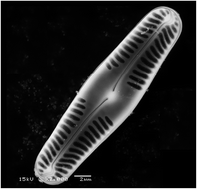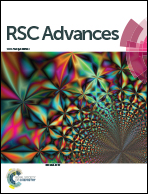Effect of pretreatment and temperature on the properties of Pinnularia biosilica frustules
Abstract
Diatoms are unicellular microalgae that self-assemble an intricate porous silica cell wall, called frustule. Diatom frustules possess a unique combination of physical and chemical properties (chemical inertness, high mechanical strength, large surface area, low density, good porosity and highly ordered features on the nano-to-micro scale) making diatom frustules suited for many nanotechnological applications. For most proposed applications the organic material covering the frustules needs to be removed. In this paper we investigate the effect of different frustule cleaning methods (drying, autoclavation, SDS/EDTA treatment, H2O2 treatment and HNO3 treatment) and subsequent heat treatment at different temperatures (105 °C, 350 °C, 550 °C and 750 °C) on the material characteristics of the diatom Pinnularia sp. Material characteristics under study are morphology, surface area, pore size, elemental composition and organic content. The cleaned Pinnularia frustules are subsequently investigated as adsorbents to remove methylene blue (MB) from aqueous solution.


 Please wait while we load your content...
Please wait while we load your content...